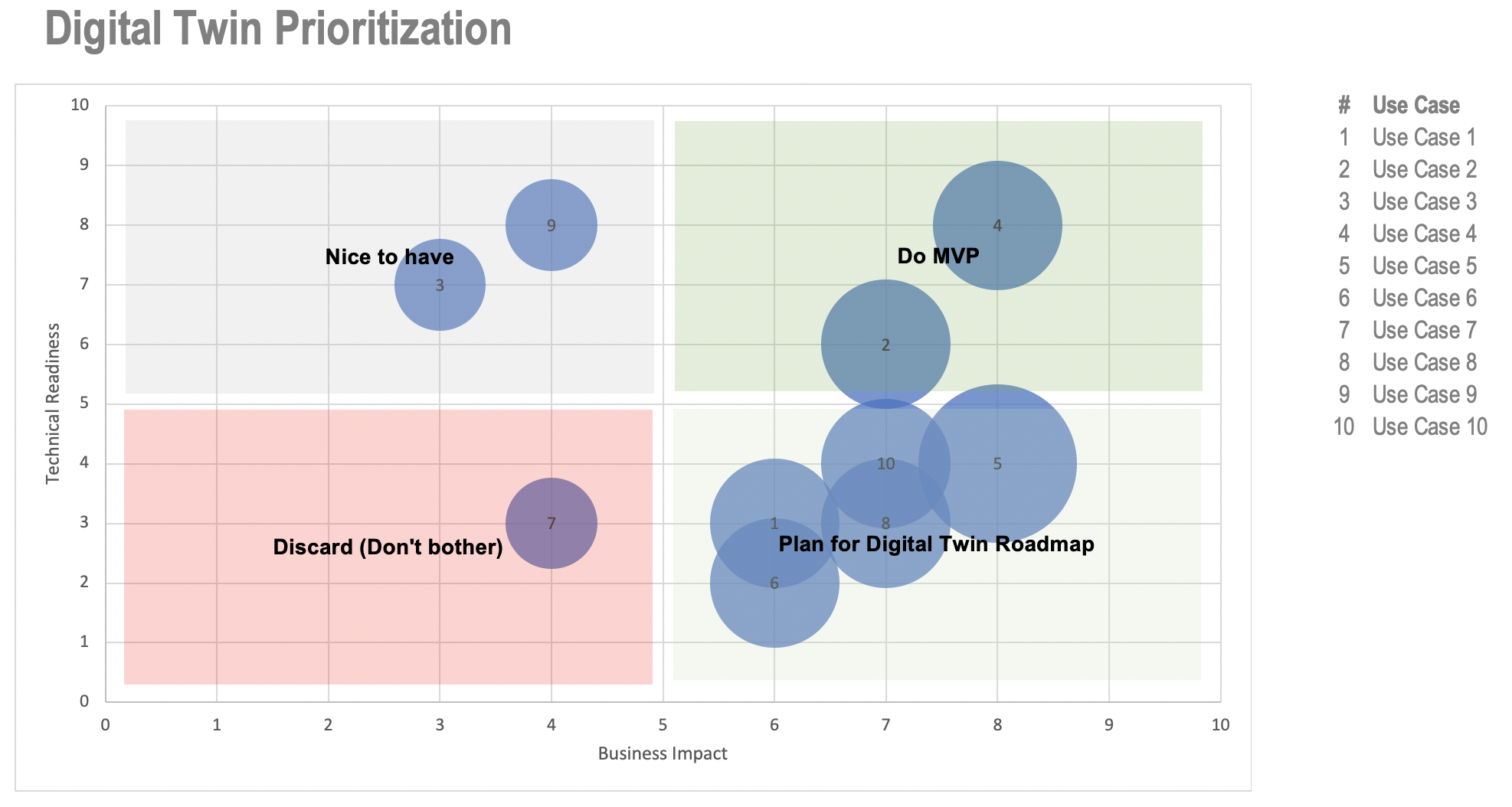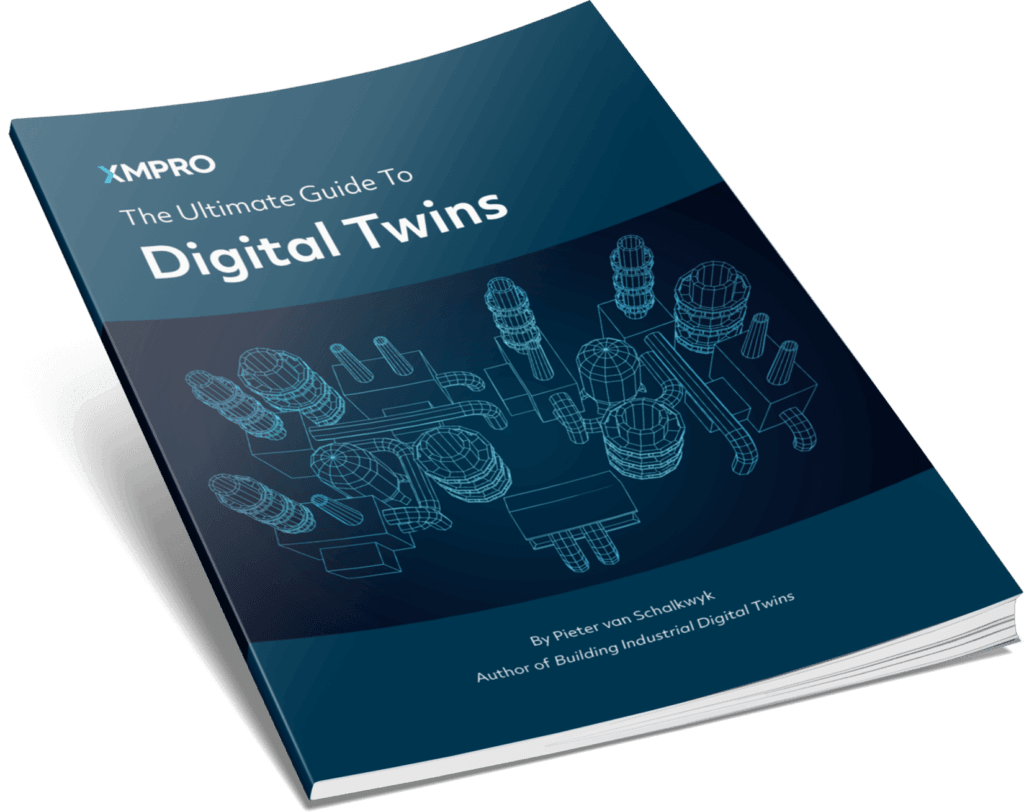In part 1 of this series, we described the fundamentals of the Lean Startup approach and how it can be applied to creating digital twins. In this article, we’ll look at the practical application of this approach to develop a Lean Digital Twin.
The first phase of the approach minimizes development effort as it focuses on identifying key business issues that can be addressed with a digital twin by describing the overall solution in an easy-to-understand manner. It is referred to as the problem/solution fit phase of the Lean Startup methodology.
The second phase of the approach defines a minimum viable digital twin (MVDT) based on the problem/solution statement from the previous phase. The MVDT is used to validate and verify assumptions and hypotheses made during the problem/solution assessment. The MVDT may undergo multiple iterations to demonstrate a digital twin/business fit. This is derived from the product/market fit in the Lean Startup approach. This is best accomplished with agile development tools that allows subject matter experts to quickly change elements of the MVDT.
Once an MVDT hypothesis has been validated and verified, the digital twin can be scaled for full production applications and lifecycle.
These first two phases are focused on validated learning based on iterations and potentially pivoting the digital twin application as new learning emerges.

It is best to construct the lean digital twin in a series of consecutive steps that are outlined below.
Step 1: Find a Problem Worth Solving (Understand the Problem)
The prioritization approach described here is used in two iterations to 1) rank multiple initiatives in an organization that could benefit from Digital Twins, and then 2) rank assets or processes that collectively operate as a system where use cases for the system are ranked. The first prioritization exercise focuses on prioritizing which system to focus on. The latter exercise provides guidance on the prioritization of use cases for an asset grouping that could be serviced by a single digital twin.
Examples include a packing line in FMCG (fast moving consumer goods), a well in Oil & Gas, a robot assembly cell in manufacturing, a main line conveyor in materials handling or a processing plant in mining.
Both exercises follow the same approach and the initial prioritization matrix can be omitted if the business is clear on the system that could benefit from a Digital Twin. It is, however, recommended to do the initial prioritization exercise to ensure that the real business challenges are addressed. It is the authors’ experience that organizational biases often influence the selection of Digital Twin candidates and the Prioritization Matrix approach assists in identifying impactful projects.
The objective is to establish a falsifiable hypothesis to test around the business problem that the digital twin will address. “Cyclone pumps are responsible for 30 hours of downtime per month” is an example of such a hypothesis that can be tested in product/solution fit interviews and workshops.
The prioritization process assesses both business impact and technical readiness of a Digital Twin project.
The high-level business outcomes in the prioritization framework are the basis for scoring and agreeing on the business impact of a specific use case. The prioritization process starts with a list of potential Digital Twin use cases and ranks them based on their business impact for each desired business outcome. The business impact metrics are chosen to align with the strategic objectives of the organization. These are often referred to as the business drivers in digital transformation programs.

To avoid analysis paralysis, a simple high, medium, and low scoring methodology is used in setting up a ranking matrix. This is best done with the business (operations), IT and OT representatives in a working session. Once the business impact is scored for each scenario the technical feasibility (or complexity) is assessed for each scenario, again without over-analyzing or getting into too much technical detail. It is a top down approach and even though information from reliability engineering practices like FMEA can be helpful indicators, it is important to guard that this becomes a technical feature or requirements design session. The impact assessment is done based on the strategic drivers of the business such as Safety, Down Time, Quality, Throughput, Cost etc.
In this example, the following technical assessment criteria is used: (1) OT complexity, (2) IT complexity, (3) analytics, (4) system complexity, and (5) project readiness. Technical assessment criteria can be adjusted to fit the requirements of the business, but for this example the criteria are for a typical industrial installation.
OT and IT complexity are described in terms of availability, accuracy, latency, and geographical location. Analytics is described in terms of maturity, sophistication (predictive and cognitive analytics) and application of business rules or physical models. System complexity is based on deployment infrastructure (edge, local, and cloud) and geographical constraints. Project readiness is assessed based on availability of subject matter experts and technical resources.
It is generally useful to define “order of magnitude” financial measures to agree on the high-level impact of each new state or scenario. The objective is not to be accurate in estimating the value of a business case, but to get high-level agreement between the different stakeholders on the potential impact of each scenario. In this example a scale of (1) greater than $100k, (2) greater than $1m, or (3) greater than $10m is used.
This “order of magnitude” is visually represented in a bubble chart with the business impact and technical readiness scores as the two major measures. The weighted average values of each of the measures are placed on the graph which is divided into four quadrants. The size of the bubble is determined by the value of the economic impact. The four quadrants represent the business readiness for each of the Digital Twin scenarios. The “Do Now” quadrant represents high business impact and a high level of technical readiness.
Opportunities on the far right of the quadrant with the biggest bubble size often represent Digital Twin projects with the highest likelihood of success for all stakeholders.

This approach provides a common understanding of the expected business outcomes and potential technical challenges in achieving this goal. It provides the basis for more detailed analysis of those projects with a high likelihood of success. A downloadable copy of the Prioritization Matrix is provided in the Lean Digital Twin Kit linked at the end of the article. In using an iterative approach where Digital Twin scenarios are first done at an overall business level, the ranking will provide guidance on the highest priority process or system that in turn gets broken down into sub-systems, components or assets that are ranked based on the same process.
In an FMCG scenario the initial ranking may be done for business areas such as raw materials handling, production processes, filling and packing, and shipping. If filling and packing is identified as the best “Do Now” opportunity then the follow-on exercise could rank digital twin scenarios for filling/sealer, labelling, cartooning, packing, and palletizing. This will identify digital use cases with the highest likelihood of successfully addressing pressing business issues.
These sessions should be limited to 90min as more detail will be required in later analysis, but the objective is to be lean and reduce waste.
The outcome of step 1 is a prioritized list of Digital Twin scenarios for problems worth solving.
Did you enjoy part 2 of this series? Click here to read part 3
Get the Free Lean Digital Twin Resource Kit
Includes the PDF version of 3-part series, the Lean Digital Twin Canvas Template and the Prioritization Matrix

















Pingback: Lean Digital Twin: Part 1 | XMPRO